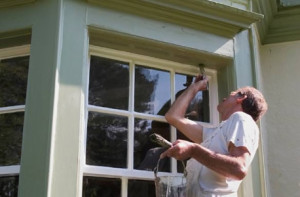4 Tips For Painting Contracts
Tips For Better Painting Agreements
When you are contracting with an interior painting company, you need to get a contract in writing before the first paintbrush hits your wall. That may seem obvious, the need for a contract, but for most people, home painting is not done frequently and they might not know how to set up the best possible painting agreement. There are a few things to do to make sure your painting contract is done well and will protect you. These four tips to better painting agreements are a good way to guarantee you have a good painting experience.
1) Make sure you define the exact services you want performed

This may be the most important part of the entire painting agreement. The services section of your contract should define not only the basic work that will be performed (for example, “paint the living room”) but also all the details that go into the painting project. The exact paint color being used can be placed in this section, as well as who will be providing the different materials involved. Although most or all of the materials are normally provided by the painting company itself, it is good to have this listed out for the sake of clarity.
Another thing to put in this section is how to handle a situation where things do not go as planned. What will happen if you decide halfway through the project that you hate the color and want to change it? That should be in your painting agreement. Are you getting other work done at the same time? How is your painter going to work with the other contractors in your home? What happens if there is a paint spill on a piece of your property? This is where you should be thinking about all the things that could happen during a painting project and listing out the responsibilities for each party.
2) Get a clear statement of cost and how it is calculated

This is also a crucial part of any painting agreement. How is the cost being calculated? Is the cost calculated by the amount of paint used by the amount of time it takes to complete the work, or is the cost calculated by the amount of wall space being painted?
Beyond the basic cost structure of the job, this section of the contract also needs to define when payment is due. Is there a deposit at the beginning of the project with the rest due on completion? Is there an installment plan in place? Is the entire payment due up front? These are all common payment options, and it is best to determine when the payments will be due in advance.
Also, there should be a listing of how payment will be made. Does the company accept or prefer one form of payment over another? Finally, there should be a written plan in place for what happens if there is a dispute regarding payment. Is there a mediation agreement listed? Which county does the dispute need to be resolved in? These are all things that should be set in stone before the work begins, for the protection of both the painter and the homeowner.
3) Set the timeline for work and the date when it must be complete

This is another aspect that is more complex than it might appear at first. It seems straightforward: how much time will it take to complete the painting project? But in actuality, you need to have something in writing to cover unexpected occurrences. What if there is a massive storm or other natural disaster that forces the work to stop? What happens if the homeowner changes their mind about the color and needs it to be changed in the middle of the project? How does that impact the timeline of the project?
As with the payment aspect, there should be provisions in place for how to resolve disputes. Consider a mediation agreement, with a specific mediator selected and the jurisdiction for dispute resolution listed in the agreement. If there are specific fees or fines that go with missed deadlines, that should also be listed in the contract.
4) Get all the miscellaneous extras in writing

Although most of the things that are needed in a painting agreement are covered in the first three sections here, there are sometimes other factors that are in play and those should be addressed in writing as well. One of the most common things put in this section is how and when progress reports will be communicated to the homeowner. Some homeowners prefer to have daily in-person meetings before the work starts, or after work has finished for the day. Others might prefer emailed reports so they have a written record of the work that is planned or has been completed on a daily or weekly basis.
Any other things that are important to the homeowner and are not addressed in the previous sections of the contract also belong in this section.
The detail that is advised here for painting contracts may seem unnecessary for those who are not that experienced in painting or home improvements, but as with most things that involve money, more detail is better than less detail. When you are looking for an interior painting company, consider us at Repairs and Paints. We can provide you with a free estimate, high quality painting and repair services, and a comprehensive contract that protects you and the investment you are making in your South Jersey home.









